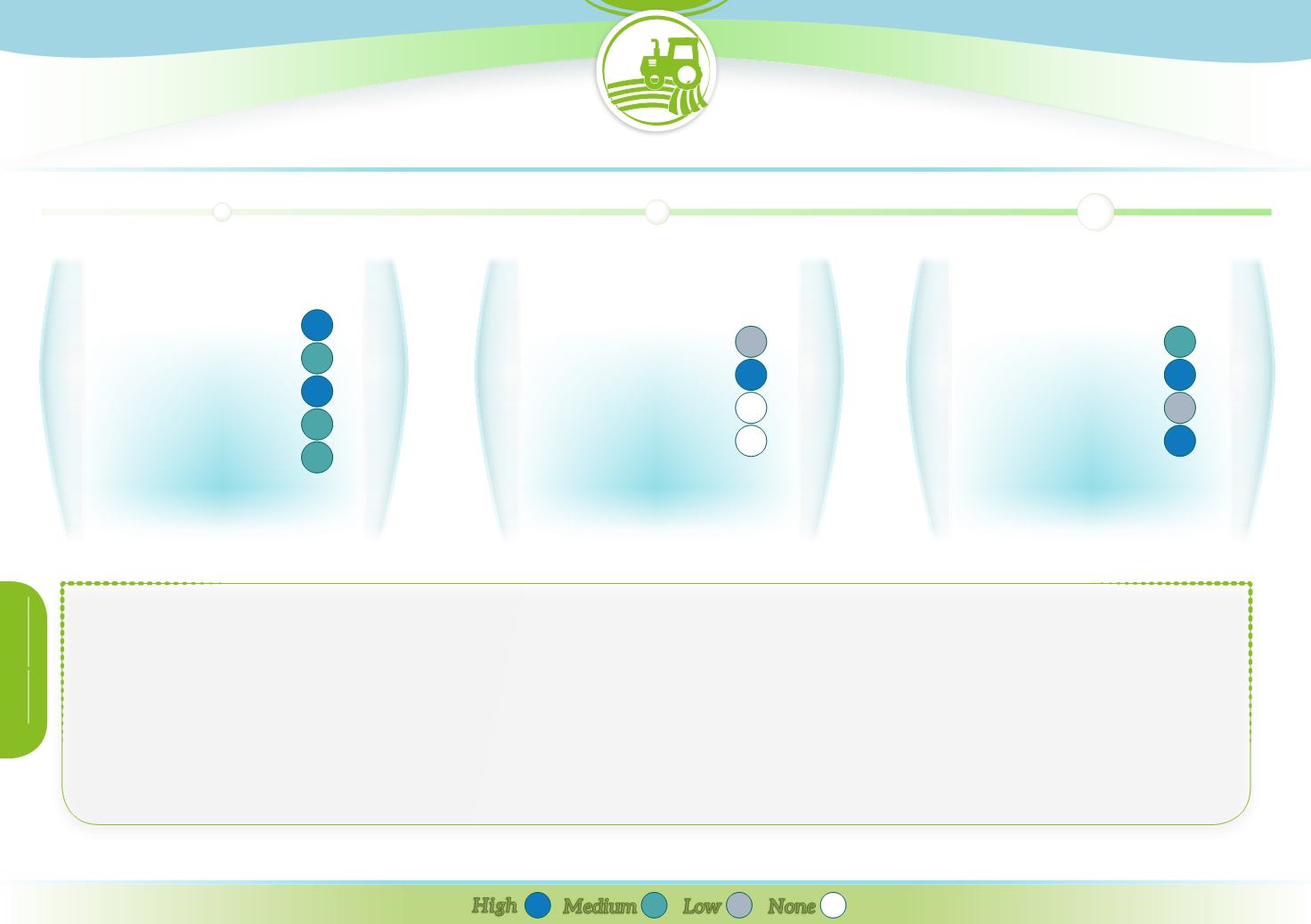
E
cosystem
servicesdelivered
Provisioning
Regulation & maintenance
Cultural
Abiotic
C
ontribution
topolicyobjectives
Water Framework Directive
Floods Directive
Birds & Habitats Directive
2020 Biodiversity Strategy
P
otential
biophysicaleffects
Runoff
Reducing pollution
Soil conservation
Habitat
Climate Change
High
Low
Medium
None
The vegetation on the buffer strip reduces the energy (flow speed) of surface water which leads to greater infiltration (also aided by improved structure of buffer strip soils).
Buffer strips
reduce runoff
by 50 to 78% compared to no buffer strip. In addition, increased evapotranspiration will contribute to increasing the capacity for water retention.
While buffer strips will not significantly attenuate peak flows, they will reduce
flood risks
through greater retention and reduction of the surface water energy. However, this will
reflect the relative size of the buffer strip. Higher infiltration may contribute to groundwater recharge, relative to the size of the buffer strip.
Buffer strips and hedges
trap/filter
sediments and pollutants: tests in hilly areas resulted in 42 to 96% P reduction in runoff, 27 to 81% N reduction and 55 to 97% sediment
reduction. Thus they contribute to improving the status of
hydromorphology
quality elements and to preventing
water status deterioration
.
By increasing CO
2
absorption, buffer strips and hedges participate in climate change mitigation and adaptation. Habitat provision and connectivity contributes to better protection
for ecosystems, more use of Green Infrastructure and prevention of biodiversity loss. By providing habitats for pollinators and bio-control species, and by reducing the impacts of
erosion, buffer strips contribute to more
sustainable agriculture
, even if they take land out of production.


